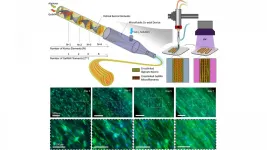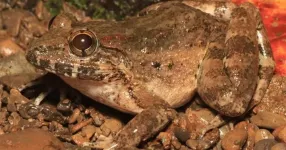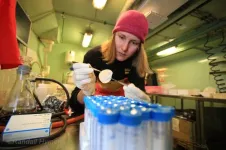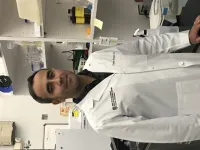Like a Trojan horse, graphene oxide can act as a carrier of organic pollutants to fish
The UPV/EHU-University of the Basque country is exploring the effects of graphene oxide alone and in combination with certain organic compounds on zebra fish
2021-05-05
(Press-News.org) Graphene is a two-dimensional nanomaterial composed of carbon and formed by a single layer of densely packed carbon atoms. The high mechanical strength and significant electrical and thermal properties of graphene mean that it is highly suited to many new applications in the fields of electronics, biological, chemical and magnetic sensors, photodetectors and energy storage and generation. Due to its potential applications, graphene production is expected to increase significantly in the coming years, but given its low market uptake and the limitations in analysing its effects, little information on the concentrations of graphene nanomaterials in ecosystems is currently available.
As a result of the surface characteristics of graphene, once in the aquatic environment, graphene could act as a carrier of organic pollutants, such as polycyclic aromatic hydrocarbons, to aquatic organisms. Accordingly, the CBET (Cell Biology in Environmental Toxicology) research group has evaluated not only the capacity of graphene oxide to sorb polycyclic aromatic hydrocarbons, but also the toxicity of graphene oxide alone and in combination with certain polycyclic aromatic hydrocarbons in embryo and adult zebrafish. The research was conducted in collaboration with the University of Bordeaux.
Embryonic malformations and neurotoxicity
"The results reveal that graphene oxide can carry polycyclic aromatic hydrocarbons into the zebrafish (via a kind of Trojan horse effect) and exert sublethal effects. Under the conditions we adopted, the toxic effects have not been huge, no fish or embryos have died, but in some biomarkers we have detected effects that have put us on the alert," said Amaia Orbea, a PhD-holder in the CBET group at the UPV/EHU.
Firstly, they detected that at high concentrations malformations may occur in embryos, "which means that in longer exposures and at higher concentrations non-viable animals may be born", explained Orbea. Secondly, this research has confirmed that "in the long term, during a three-week exposure period, the enzyme acetylcholinesterase, which slows down nervous stimuli, was inhibited in all the fish treated, so despite not using very high concentrations, we saw that as the exposure time increases, neurotoxic effects begin to appear", said the researcher.
"We used specific concentrations and time periods, but we don't know how these concentrations will evolve from now on in nature or what their possible influence may be in relation to other pollutants. The results have shown us that the concentrations that may exist in the environment at the moment are not very dangerous, but we have to be careful: we don't know what effects these low concentrations may have during longer exposures. The results obtained are related to the conditions applied in our experiments. We don't normally come across graphene alone in the environment; along with graphene there are many other pollutants that also affect animals... We need to consider them all at the same time," she concluded.
INFORMATION:
Additional information
This study is part of the international co-supervised thesis by PhD student Ignacio Martínez-Álvarez. The research was funded by the UPV/EHU; Amaia Orbea is the thesis supervisor at the UPV/EHU, and Hélène Budzinski is the thesis supervisor at the University of Bordeaux. The research was carried out in the Department of Zoology and Animal Cell Biology and at the Experimental Marine Biology and Biotechnology Research Centre (Plentzia Marine Station), in collaboration with Polymat.
[Attachments] See images for this press release:
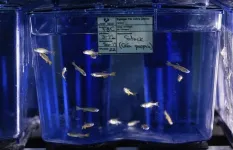
ELSE PRESS RELEASES FROM THIS DATE:
2021-05-05
Loneliness and social isolation, which can have negative effects on health and longevity, are being exacerbated by the COVID-19 pandemic. More than half of surveyed adults with cancer have been experiencing loneliness in recent months, according to a study published early online in CANCER, a peer-reviewed journal of the American Cancer Society.
Studies conducted before the pandemic reported that 32 percent to 47 percent of patients with cancer are lonely. In this latest survey, which was administered in late May 2020, 53 percent of 606 patients with a cancer diagnosis were categorized as experiencing loneliness. Patients in the lonely group reported higher levels of social isolation, as well as more severe symptoms of anxiety, depression, ...
2021-05-05
WASHINGTON, May 5, 2021 - 3D bioprinting can create engineered scaffolds that mimic natural tissue. Controlling the cellular organization within those engineered scaffolds for regenerative applications is a complex and challenging process.
Cell tissues tend to be highly ordered in terms of spatial distribution and alignment, so bioengineered cellular scaffolds for tissue engineering applications must closely resemble this orientation to be able to perform like natural tissue.
In Applied Physics Reviews, from AIP Publishing, an international research team describes its approach for directing cell orientation within ...
2021-05-05
LAWRENCE -- Researchers at the University of Kansas have described a new species of fanged frog discovered in the Philippines that's nearly indistinguishable from a species on a neighboring island except for its unique mating call and key differences in its genome.
The KU-led team has just published its findings in the peer-reviewed journal Ichthyology & Herpetology.
"This is what we call a cryptic species because it was hiding in plain sight in front of biologists, for many, many years," said lead author Mark Herr, a doctoral student at the KU Biodiversity Institute and Natural History Museum ...
2021-05-05
"The findings of our study tell us where and when greenhouse gas is being most absorbed in Arctic waters." Says Friederike Gründger, who conducted the study as part of her post-doctoral research at CAGE.
The study, which was conducted on the shallow shelf west of Svalbard, took a closer look at communities of bacteria that use methane as an energy source and carbon substrate for growth. The results from the study show that these methane-oxidizing bacteria are highly affected by the specific underwater landscape and seasonal conditions in the study area.
"Several large depressions, up to 40m deep, are observed along the shallow shelf off Western Svalbard, ...
2021-05-05
In 2005, greenhouse gas (GHG) emissions from residential energy use hit an all-time high in the United States. Each year since, emissions have dropped at an average annual rate of 2 percent.
In a study published in Environmental Research Letters, "Drivers of change in US residential energy consumption and greenhouse gas emissions, 1990-2015," a team of researchers from the Yale School of the Environment (YSE) outlined several factors that have contributed to this decrease, highlighting efficiencies in new home construction, energy consumption and household appliances, ...
2021-05-05
(Philadelphia, PA) - For patients with chronic pain, ineffective treatments, lowered work productivity, and other factors often coalesce, fueling feelings of hopelessness and anxiety and setting the stage for even bigger problems, including substance use disorders. In 2017 alone, some 18 million Americans misused prescription pain relievers over the course of the previous year. In many of these instances, patients suffering from chronic pain became addicted to prescription opioids.
In addition to being highly addictive, many studies suggest that prescription opioids do not effectively control pain over the long term, and hence researchers ...
2021-05-05
Many people with diabetes endure multiple, painful finger pricks each day to measure their blood glucose. Now, researchers reporting in ACS Sensors have developed a device that can measure glucose in sweat with the touch of a fingertip, and then a personalized algorithm provides an accurate estimate of blood glucose levels.
According to the American Diabetes Association, more than 34 million children and adults in the U.S. have diabetes. Although self-monitoring of blood glucose is a critical part of diabetes management, the pain and inconvenience caused ...
2021-05-05
At the beginning of the COVID-19 pandemic, intense social distancing and lockdown measures were the primary weapon in the fight against the spread of SARS-CoV-2, but they came with a monumental societal burden. New research from the Center for the Ecology of Infectious Diseases and the College of Public Health at the University of Georgia explores if there could have been a better way.
Published in the journal Proceedings of the Royal Society B, the research analyzes more palatable alternatives to the kind of social distancing mandates that threw a wrench at how businesses, schools ...
2021-05-05
A study published in July 2020 hypothesized a link between the presence of bradykinin, a well-known peptide, and severe cases of COVID-19. Vardan Karamyan, Ph.D., an associate professor and vice chair for the Texas Tech University Health Sciences Center (TTUHSC) Jerry H. Hodge School of Pharmacy Department of Pharmaceutical Sciences, had not previously conducted or evaluated any research related to COVID-19. However, he found the article intriguing because it discussed bradykinin, one of three specific peptides with which his lab has much well-published experience.
The paper received a lot of attention in both the media and scientific literature, but as Karamyan read through it, he felt it failed to address an equally important part of a bigger picture: the likely ...
2021-05-05
A new service piloted at Penn Medicine allowed a proportion of patients to avoid hospitalization by providing them with greater support after visiting the emergency department. The vast majority of the patients enrolled in the service - nearly 9 out of 10 - did not need to return to the hospital for care in the month that followed their initial visit. The study was published in Healthcare.
"The culture is shifting where we realize that hospitalization is not always the best option for patients - particularly patients with chronic illness," said one of the study's lead authors, Austin Kilaru, MD, an emergency physician at Penn Medicine. "We need to find better ways of helping patients not just get healthy in a hospital, but stay healthy at ...
LAST 30 PRESS RELEASES:
[Press-News.org] Like a Trojan horse, graphene oxide can act as a carrier of organic pollutants to fish
The UPV/EHU-University of the Basque country is exploring the effects of graphene oxide alone and in combination with certain organic compounds on zebra fish

